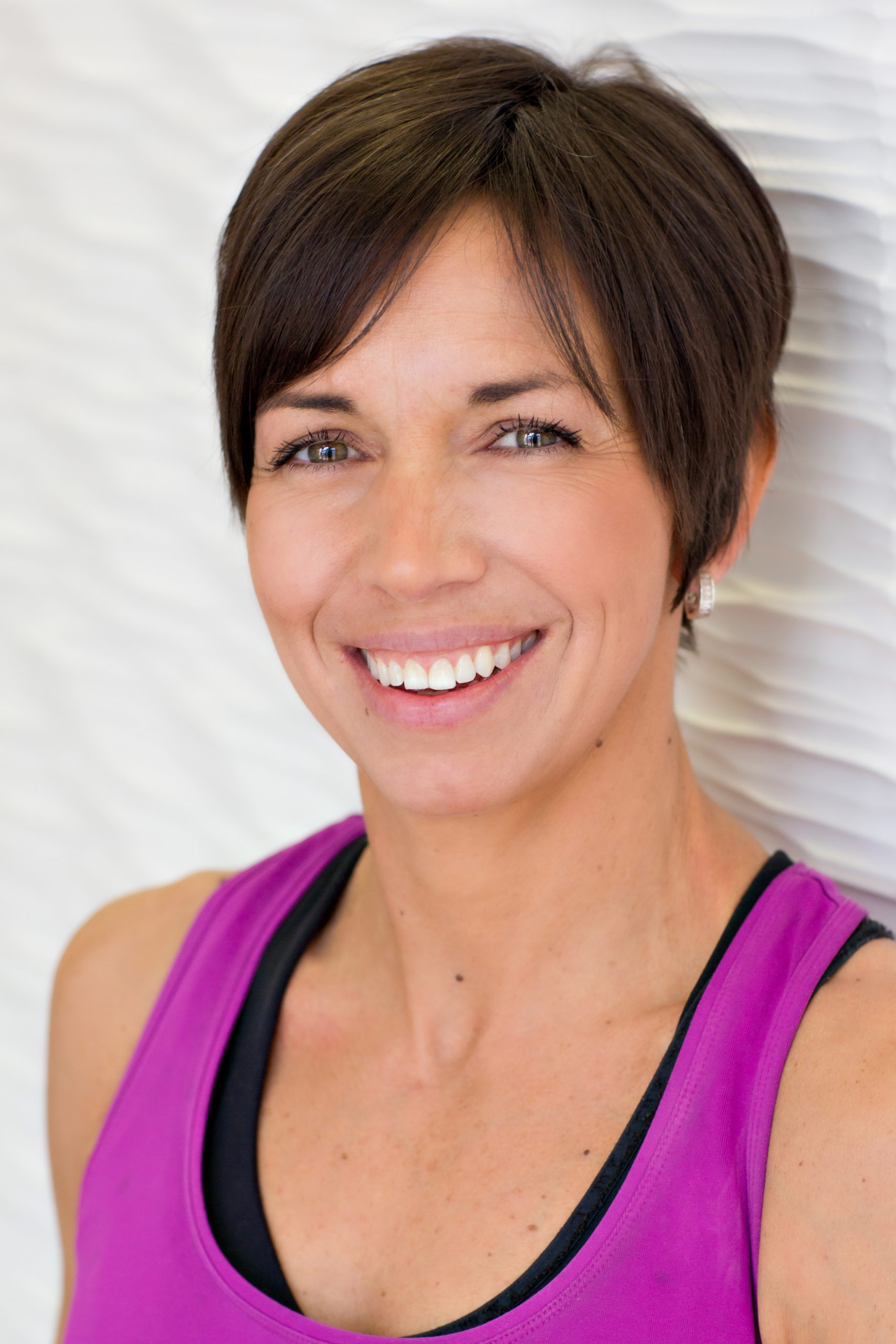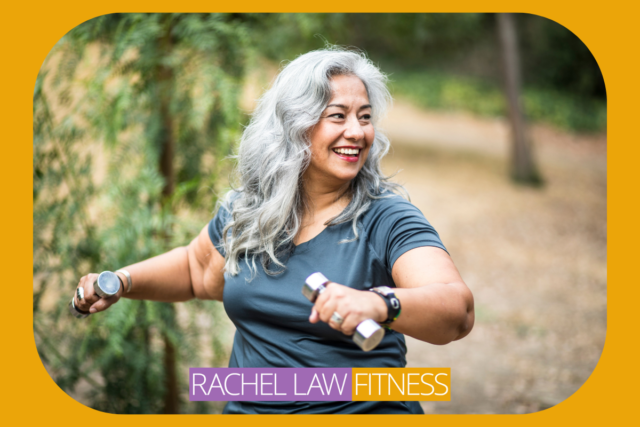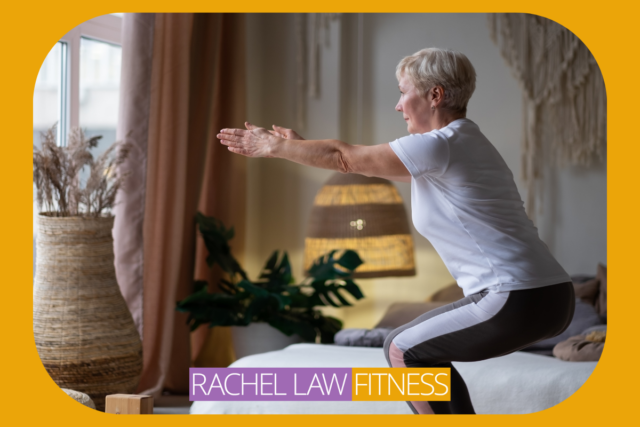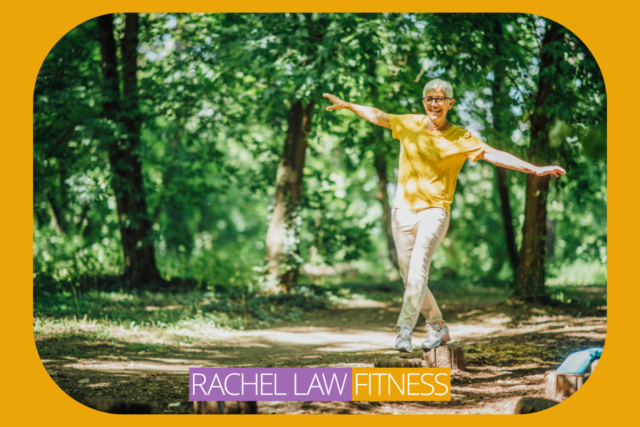I’ve spent much of the past 3 years in the gym.. both as a participant and as a teacher
My exercise regime has remained consistent through that time but with tweaks as I have matured. I have always focussed mainly on resistance training. At times in my late 30s and early 40s, I did a lot of heavy weight training. I also trained to take part in a number of endurance events: the Olympic London Triathlon, Run to the Beat half marathon, and Hampton Court to Kingston Swim. Such events have meant spending more time on cardiovascular exercise.
These days I mainly work out with my 16-year-old son. This works well as we train at 6.30am each morning, so we are accountable to and motivate each other, especially when the mornings are dark and cold through the winter.
We follow a similar workout, though there are some differences in our needs and goals. A 16-year-old male wants to build muscle size and strength, and to lift increasingly heavy weights. As a 50-year-old female I recognise the importance of continuing to strength train, more to maintain muscle mass, while training on balance and coordination becomes equally important. That said, training these disciplines is also valuable for sports performance training, and for a balanced overall fitness regime.
In this article, I’m going to focus on explaining the need to incorporate a variety of training principles as we age, and things that are different from when we were younger.
As we age both physical aspects of appearance and less obvious things within our body change. Muscles lose strength, endurance, and flexibility, and we tend to get a bit shorter as we lose bone density, particularly in our vertebrae. Tendons and ligaments degrade over time. They dehydrate, and adhesions or internal scar tissue, can form from minor injuries. Muscle tissue goes through degradation over time, known as sarcopenia. Such changes in structure, combined with less good balance, can increase our susceptibility to fractures and falls.
Our recovery rates, ability to build muscle and inflammatory markers are less good as we age. So how can we devise an exercise programme to help us stay in the best possible shape as we get older?
WARM UP
Any workout should start with a short warm-up to prepare your muscles for more strenuous work. A good way to begin is with walking or marching. Then make stretches dynamic so that they mimic the exercises you are going to do.
RESISTANCE TRAINING
Simply doing aerobic exercises, such as walking or biking, is not enough to preserve muscle tone. Current research found the rate of muscle atrophy was close to 1% per year after age 50, which has an exponential (continually increasing) effect when considered over time.
Resistance training should constitute the main part of your workout in order to
- Maintain muscle tissue and strength
- Contribute to better balance and coordination, and reduce the risk of falls
- Preserve bone density and reduce the risk of osteoporosis
FLEXIBILITY
As we age our range of motion — the full movement potential of a joint — decreases due to changes in connective tissue, arthritis, loss of muscle mass, and more. We lose our skin’s elasticity, our muscle tone, and bone density. The water content in our tendons decreases and as a result, our tendons get stiffer.
All these factors can contribute to the natural decrease in our flexibility, so adding an element of stretching to a workout regime becomes even more important as we get older.
Benefits of stretching include the development and maintenance of strength, improving flexibility, and increased circulation and blood flow, all of which will provide a greater quality of life and healthy aging.
Being more flexible improves your ability to perform daily physical activities, decreases the risk of injuries such as fractures and muscle strains, and improves balance which also decreases the risk of falling and injury.
Gaining flexibility takes time so be sure to go slowly and pay attention to your body. One stretch doesn’t fit everyone, but there are many variations that can be made. As you improve your flexibility, you’ll be able to reach further with the same stretch or add different stretches for the same muscle.
Yoga and Pilates are great forms of stretching exercise as they build core body strength and increase stability.
BALANCE and YOUR CORE
We need good balance to do just about everything, including walking, stepping over obstacles on rough or uneven surfaces, rapidly shifting direction while walking, getting out of a chair, and leaning over to tie our shoes.
You maintain your balance using:
- your eyesight
- your vestibular system (structures in the inner ear)
- feedback from joints in the spine, ankles and knees
These systems send signals to your brain to help your body maintain its balance as you move about your day.
As we age these signals aren’t communicated as effectively. Eyesight deteriorates, cognitive abilities start to decline, and joints become less mobile. Hence we need to exercise to maintain our ability to balance.
Benefits of doing balance exercises include:
Prevent falls
Balance drills help you to control your core and limbs better. When you have good balance, you can quickly adapt to changes in body position, adjusting on the fly to unexpected variations in elevation, or objects that you didn’t see underfoot.
Reduce the risk of lower extremity injuries.
Avoiding falls not only helps you avoid physical damage like broken hips; it also boosts confidence.
Improves proprioception which is the ability to know where you are in space.
Good balance begins with your core.
Examples of simple exercises you can do each day to keep your balance top-notch:
- Stand on one leg while doing the dishes or holding onto a sturdy chair. Variations include holding your foot to the front, to the side and behind you. Perform for 10 seconds each, 10 repetitions each side.
- Sit and stand from a chair or bench unassisted. Practice without using your hands. Repeat for 10 repetitions.
- Stand up from a seated or all-fours position on the floor. Successfully getting from the floor to a standing position may be difficult, so practice slowly with assistance if needed. Repeat 10 repetitions.
However gardening jobs such as digging, as well as carrying heavy loads such as groceries also count as exercise that improves our balance.
SPEND LESS TIME and EXERCISE IN SMALL CHUNKS
As we age it is worth considering spending less time in one go exercising. You don’t have to spend two hours in the gym to reap all the benefits that exercise can provide. Research (European Journal of Applied Physiology) has found that breaking up exercise throughout the day and engaging in shorter “micro-workouts” can be just as effective as longer workouts.
So, to return to how I tweak my workouts with my son…
While he rests between sets of heavy weights, I will incorporate a balance exercise. While he does a bilateral exercise (eg RDL) I will do the same as a single-leg exercise.
I may set a flexibility exercise with a strength-based exercise while he supersets two strength exercises.
Finally….
A great balanced fitness regime doesn’t call for everything to be done in one session — blend your activities together to ensure a well-rounded program.

Rachel Law is a personal fitness trainer based in New Malden, Surrey. Qualifications: ActivIQ Level 3 Personal Training; Burrell Education Pregnancy Exercise Prescription; Burrell Education Advanced Pregnancy Wellness Practitioner; Burrell Education Advanced Post Natal Exercise Prescription; Burrell Education 3rd Age Women Optimal Health and Nutrition; Burrell Education Peri Natal Athlete; Burrell Education Pelvic Flow and Freedom; Olympic Weight Lifting; Premier Global Kettlebells; FIE Level Assessment and Mentoring



